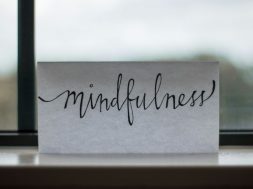By: Michael McQueen
When the world was in deep lockdown last year, a major trend that dominated social media surrounded people’s memories of ‘normal’ life. Clips of life before lockdown boasted scenes of exotic travel locations, shots of passports in hand, bustling crowds, concerts, festivals and interestingly, cinemas.
One example of this trend that circled platforms like TikTok in particular, promised to take viewers back to pre-COVID life as it played the familiar sounds of popular cinema ads, shots of popcorn and dimmed lights, and the famed 20th Century Fox intro.
However, coinciding with this was the seeming demise of cinemas and theatres with the proliferation of streaming services and the accelerating effects of lockdown on these trends. Platforms like this proved to be an unforeseen plot twist in the standing film industry narrative.
In the last 10 years, film attendance has fallen across the biggest film producing countries. Despite the overall improvement of the cinematic experience, with enhanced comfort, sound and visuals, these rates have continued to fall, as have the rates of film productions and releases, primarily due to the competitive streaming landscape. [1]
As with most industries, the effect of the internet and technology on film has triggered its evolution into one of the many direct-to-consumer industries of our era. Streaming platforms grant consumers easy, cheap and convenient access into film viewing, especially when compared to the cinematic experience. Because of this, the window for screening films solely in cinemas before any release on other platforms is closing,[2] and we are increasingly seeing films bypass the cinema altogether.
These trends were only accelerated by COVID-19 which forced the temporary pause of film production in many places, the closure of film theatres and the subsequent growth of streaming services. While some in the industry attribute low movie attendance to the pandemic, returns to reopening cinemas are slow and the moves of major film companies suggest otherwise.
Among the companies making these moves is Disney, whose CEO Bob Chapek recently remarked on the changing attitudes of moviegoers.[3] Stating, ‘The consumer is probably more impatient than they’ve ever been before,’ Chapek explained that while Disney would not abandon theatre screening altogether, their ongoing approach to distributing movies would need to change with the demands of consumers. According to him, films will need to be quickly released online, whether to purchase or stream. As Disney held the largest market share of film production in 2019 and dominated cinema sales, these statements mark a significant change for the film industry.[4]
In response to the same trends, in December of last year AT&T, which owns Warner Brothers, announced that all WB movies would be released simultaneously in cinemas and on its streaming platform in 2021.[5] Many other large Hollywood studios have experimented in recent years with releasing films directly onto streaming platforms and have made large-scale investments which further prove their commitment to online streaming.[6]
The effect of this on the creatives of the industry is disheartening to say the least. For filmmakers, many of their works are designed with the big-screen in mind – the audio, visual and interpersonal capabilities of the cinematic experience are taken into account when creating a film. For other members of the industry, like studio partners and theatre owners, the large-scale moves of major production companies place initial investments under serious threat.[7]
However, in spite of all of this, there is still some suggestion that cinema is not dead.
Some critique these major trends by pointing out that major film companies are simply reacting to immediate trends of consumer demand and ignoring the standing legacy of film and television which has survived many crises and bounced back. A comparable crisis in the streaming world has not yet occurred, and so there is nothing to suggest or promise its survival. They also point out the obsession with innovation that treats every new idea as the best idea and ignores the concerns of key stakeholders and customers.[8]
Beyond this, it has been my experience in working with businesses and individuals that the overwhelming embrace of technology in the last year is not necessarily favoured. We are all familiar with Zoom fatigue, the isolating effects of working from home and the frustration of dependence on technology for all communications.
Businesses, leaders and workers across all industries should be aware of the ongoing demand for in-person, collective experiences. While we have seen an extreme embrace of various technologies in the last year, we must not ignore the potential for the pendulum to swing back in the other direction, as people are feeling the overall effects of technology fatigue.
With so much exposure to virtual and technological experiences in the last year, people are now craving immersive, sensory experiences that they can share with others in a real and tangible space.
One place that many people find such experiences is the cinema. The trend that circled TikTok last year proves this, as many found themselves missing the collective and sensory experience of sharing a space with others and encountering something emotional and immersive together. The anticipation of dimming lights, a hushed room and the opening scene of a film on the big screen provides a kind of immersive experience that simply cannot be paralleled at home on a streaming platform. Witnessing other people’s reactions and sharing in their emotions is one of the key joys of cinema because it provides a human experience that we all crave.
The reality is that many films, along with other cultural productions, are simply designed for cinema. The sensory, emotional and immersive experience provided by cinemas is part of the purpose of many films. Furthermore, that is how people want to experience them. Anybody can view famous artworks with one simple search online. But people continue to travel across the world to the Louvre in Paris to view the Mona Lisa and to Florence to view the statue of David.
While streaming platforms and emerging technology pose genuine threats and have already seen at least the partial downfall of the big-screen, it is the in-person, collective and sensory experience of cinemas that provides them with some hope… and this is something humans will crave for as long as we are human.
[1] Pasquini, S & Hall, S 2020, ‘Can there be a fairy-tale ending for Hollywood after COVID-19?’, World Economic Forum, 23 July.
[2] Ibid.
[3] Palmeri, C 2021, ‘Disney CEO says pandemic has probably changed moviegoing forever’, Sydney Morning Herald, 3 March.
[4] Ibid.
[5] Sergi, G 2020, ‘Streaming wars: how threatening are they really to the film industry?’, The Conversation, 17 December.
[6] Palmeri, C 2021, ‘Disney CEO says pandemic has probably changed moviegoing forever’, Sydney Morning Herald, 3 March.
[7] Sergi, G 2020, ‘Streaming wars: how threatening are they really to the film industry?’, The Conversation, 17 December.
[8] Ibid.
Article supplied with thanks to Michael McQueen.
About the Author: Michael is a trends forecaster, business strategist and award-winning conference speaker.
Feature image: Photo by Daniele Levis Pelusi on Unsplash









